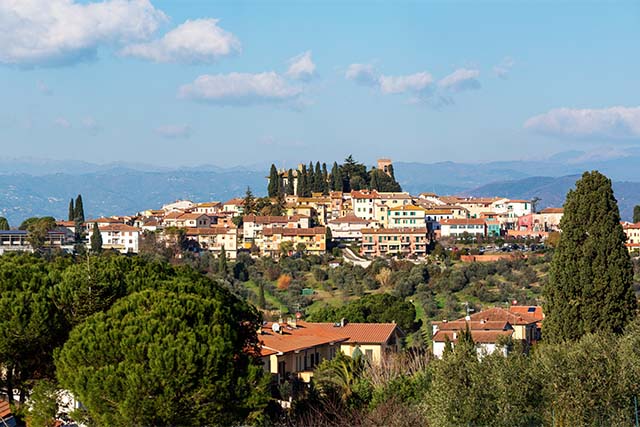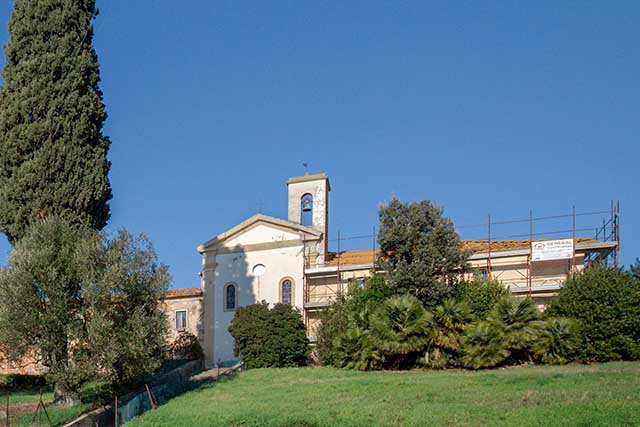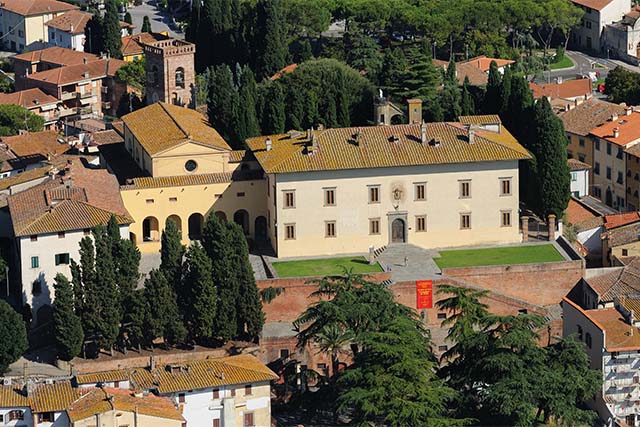Municipality of Cerreto Guidi
The aspect that the ancient Guidi castle must have had at the time of Leonardo was that of the ring of the new 14th-century walls required by Florence. As can be read in the Florentine provision of 1336, the new circuit of walls, which were also intended to enclose the ring-shaped village built that the foot of the castle, were to have been fortified with eight towers about 15 meters high, at least six meters above the line of merlons. These would be the same eight towers we can count on the circular walls of the castle of Cerreto, drawn by Leonardo in the famous bird's eye view map from the Windsor Castle collection. Today those towers no longer stand.
The village of San Zio has ancient origins. The name derives from the saint’s name San Senzio by which the small village was known, depending in the early Middle Ages on the ancient parish church of Cerreto. This small town, located on the hills overlooking Cerreto Guidi, still shows the landscape of the rural countryside that Leonardo must have seen even in his day. On these gentle hills, still rich with vineyards, Leonardo's father declared that he owned houses and plots of land in the towns of a Riminutoli and a Creti. A century later, at the time when the Medici villa of Cerreto was being projected, the lands and farmhouses of San Zio were bought in quantity by the Grand Duke Cosimo I.
The Medici villa of Cerreto Guidi was born, at the behest of Cosimo I, as a holiday resort for the grand-ducal family, as a point of departure for hunting expeditions into the forests of Montalbano and the hills of Greti, up to the borders of the marsh. The museum spaces, where an important collection of hunting weapons is on display, will host an exhibition entitled Il volo tra Pisanello e Leonardo da Vinci (Flight between Pisanello and Leonardo da Vinci). The exhibition itinerary passes through images from treatises on medieval falconry, Pisanello's naturalistic studies, and on up to Leonardo's observations on flight, the central theme of his famous Codex on the Flight of the Birds, on display in facsimile version.







